Be A Light In The Spaces You Occupy
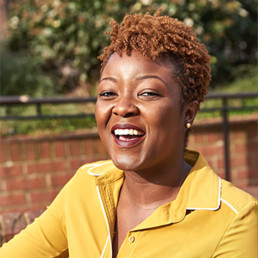
Written by Ayo Awotona
Ayo Awotona specializes in confidence building for girls in education. She does this through programs, workshops, and keynote speeches.
One of the great aspects of being a servant leader is being a light. It might sound strange but essentially it means having the ability to step into workplaces (physically or virtually) and speak hope, truth, and wisdom. It’s having the ability to help teams see situations with a new perspective and encourage them to have a can-do attitude.
Light is associated with visibility and helps to see things thoroughly, and servant leaders can provide that type of light. We can see things that others may not, such as highlighting why certain areas are not functioning well and cultivating a plan to tackle the problem.
How Can We Be Lights?
There are many ways we can be a light in our working environment and below I share four ways:
- Be perceptive/observant – This ultimately means being able to see deeper than what is on the surface; finding what systems are working or not and why, seeing how to implement new changes and reinforce what is already working well, etc.
- Be strategic – This definitely takes teamwork to brainstorm and create effective strategies to help run programmes, projects, or systems more smoothly.
- Spread hope – We can bring reassurance to others and brighten up the atmosphere by simply being hopeful and positive, reminding them of the vision and goal of the organisation/school.
- Embracing our individuality – Before being servant leaders, we are human with our own character traits and personalities. We can become more relatable and connect better with our colleagues/others because we come as ourselves.
What’s The Significance of Being A Light?
You might be wondering why it’s so important to be a light? Well, to give an illustration, we know there’s a stark contrast between darkness and light.
Imagine living in a house that is dimly lit for a whole week, and when the lights get fixed, everything becomes so much brighter and clearer. Similarly, we can be a light in dimly lit situations and see things through a new lens to help make what was ambiguous clear.
Many of us have experienced other people being lights in our world, maybe our mums, a friend, a mentor, etc. They brought hope, warmth, or made things visible that were not clear to us.
In Conclusion
In one way or another, all of us have the capability of being a light in each others’ lives. Specifically, in a working setting, servant leaders can be a light to spread hope, encourage change where necessary and bring new perspectives to improve overall work efficiency and efficacy.
Sorry My Mental Illness Isn’t Sexy Enough For You

Written by Katja Pavlona
MFL Teacher and founder of Sorry My Mental Illness Isn’t Sexy Enough For You
If I told you I had a serious health condition that kills one in ten of its sufferers, how would you feel? Sad? Sympathetic? Curious?
How would you behave towards me? Kindly? Compassionately?
If I told you my condition was a personality disorder, would you still feel the same? Or would you become fearful? Avoid me? Spread rumours about me? Tell everyone I’m clearly unstable/ an attention seeker/ making it up/ a danger to others because of my diagnosis?
I have experienced all of the above reactions, and let me tell you the fact that 10% of people with Borderline Personality Disorder commit suicide, and up to 75% will attempt it at least once in their lifetime, does not gain you much sympathy.
I decided to speak out about being a teacher with BPD (also known as EUPD/ Emotionally Unstable Personality Disorder) after years of battling with the NHS to obtain a diagnosis.
BPD is characterised by nine main criteria. However to qualify for a diagnosis, a patient only needs to demonstrate five of the nine characteristics. This often leads to misdiagnosis, most frequently with bipolar disorder and CPTSD. In BPD the main features are fear of abandonment, unstable relationships which flit between idealisation and devaluation (splitting), unclear or shifting self image, impulsive and self-destructive behaviours, self harm, extreme mood swings and emotional dysregulation, feelings of emptiness and outbursts of uncontrollable anger. I don’t have all of the symptoms, but the ones I do have can severely affect my life.
Symptoms tend to lessen with age and I am no exception. My late teens and early twenties were chaotic and self-destructive. Training as a teacher was singularly the best thing I did to gain control over my illness.
Teaching gave me purpose, distraction and structure, and I found rapport with teenagers came easily. My impulsive tendencies can be a real asset in the classroom when I need to be flexible with my approach, and my sensitivity to others makes me extremely perceptive to the needs of young people. It also means I am able to negotiate sensitive conversations well due to my high levels of empathy and hyper-awareness of non-verbal cues. My tendency towards black and white thinking means students know my boundaries are consistent, and the very nature of BPD means that my practice is automatically trauma-informed. The idea that people with BPD are a threat to children is totally unfounded.
I decided to ‘out’ myself during a staff CPD session on mental health. So much of the mental health discussion is centred around anxiety and depression due to the stigma and misinformation around more serious conditions. I felt people needed to realise there are many people who have no voice in the discussion about mental illness.
Colleagues were shocked at my disclosure- I am very high functioning and there is little to give away that I live with one of the most serious and stigmatised mental illnesses there is. After I spoke out about my diagnosis, I was surprised to find I wasn’t the only teacher in my school with BPD. For some reason, people in general seem to think mentally ill people are all rounded up and hidden away on reserves somewhere. They find it quite shocking that we’re living in the community with largely normal lives.
Alongside BPD I also experience psychotic symptoms such as hallucinations (mostly olfactory, tactile and gustatory, but also occasionally auditory and visual) delusions and paranoia. It’s unknown whether my psychosis is a part of the BPD or if it’s a hangover from my family history of schizophrenia.
Over the years I’ve learned to use my environment and context to help me work out what is and isn’t real, but it can make life difficult and it isn’t always 100% foolproof. I have been signed off work for brief periods of time, I do struggle with suicidal ideation, I take mood stabilisers and antipsychotics, I have to engage in therapy and I can be difficult to work with when I’m not on form. But I am determined to be the best teacher I can be.
It’s important to give our young people diverse role models. But whereas LGBTQ+ and BAME teachers can speak freely about their experiences, if I were to do the same it would likely end my career. My school are supportive, but insist that any media work I undertake has to be anonymous. I cannot show my face and my true identity must be kept secret. Society isn’t ready for people like me just yet. The stigma of a personality disorder is simply too large.
The greatest irony is that I am fairly confident that few- if any- of my students would care that I have a personality disorder. Their parents? That’s likely a different story. But I’ve found young people are surprisingly tolerant. They value openness. And in all honesty they have already worked out I don’t conform to the stereotype of a teacher. The green hair, nose ring, loud 80s jumpsuits and tattoos gave that away early on.
I’ve found schools generally want to be supportive. There are still some things they aren’t getting quite right. I was somewhat bemused at one school that, upon disclosing my diagnosis, immediately began discussing reduced timetables and responsibilities. For some people with mental illnesses, myself included, this isn’t always the right approach. At the time of writing I am teaching full time, studying for a Master’s and also a school leadership qualification. If ever there was a mental illness that the phrase ‘the devil makes work for idle hands’ could be applied to, BPD is probably it. Staying busy is key to keeping me on track.
If you work with someone with a personality disorder, it’s also important to think about how you frame their behaviour. Borderlines are known for having problems with managing their emotions and it’s something we have to work really, really hard to stay functional and maintain relationships. It’s probably the biggest battle we have.
So when we give an opinion, stand up for ourselves or raise an issue, don’t roll your eyes and dismiss/trivialise it as ‘over-exaggeration’ or ‘over-dramatic’ and chalk it up to us having BPD. We are people with thoughts, feelings and personalities outside of BPD, and this kind of attitude is invalidating and belittling. Sometimes our label is a convenient excuse to sideline us, especially in a professional context, and we are very aware of it. The same goes for difficult conversations and confrontation with colleagues. If these situations are mismanaged, they can be catastrophic.
One of the main areas that schools need to work on is the language used around mental health. Too many times in schools I hear students using mental health as an insult: “Psycho”, “Schizo”, “She’s mental,” “He’s crazy,”, “You’re triggering me so bad right now.” I’ve also heard, “He’s such a narc,” (short for someone with Narcissistic Personality Disorder) and there was a trend a few months back for students declaring any drama to be “so borderline.” I always challenge this, but I suspect I’m in the minority.
The simple fact is that mental health doesn’t have the same status as race and gender when it comes to tackling stigmatising language. This extends to HR too. Nothing is more frustrating than the fact I’ve spent time delivering training on BPD in schools only to repeatedly see my condition referred to as ‘Bipolar Personality Disorder’ in emails (it doesn’t exist) and Occupational Health forms. It’s not hard to use the correct terminology and avoid mis-labelling.
This isn’t the only area where some schools are lacking. Whilst jobhunting last year, I decided to declare my BPD as a disability on application forms. The reason for this was twofold- I need reasonable adjustments in place to enable me to do my job properly, and also many schools subscribe to the government’s Disability Confident scheme which guarantees interviews to disabled candidates who meet the minimum criteria.
I applied for dozens of jobs where I met all of the job requirements and wasn’t offered a single interview, even for schools that boasted they were part of the Disability Confident programme. I emailed two schools asking for feedback on my application in an effort to find out why I wasn’t getting interviews. Neither responded directly to my questions. Many schools boasted on their websites about their commitment to diversity and equality. Apparently this didn’t extend to disability equality.
I was curious as to whether my decision to declare BPD had played a part in my rejections and so removed it from job applications. In the following weeks, I was shortlisted for interview six times. Of course I can’t prove this to be discrimination in any concrete way. Fortunately, as the saying goes, one person’s trash is another’s treasure, and I am due to take up a post in the senior leadership team of an alternative provision school where my lived experience of mental health is considered a strength rather than a failing.
As a result of my experiences, I decided to set up a mental health project called Sorry My Mental Illness Isn’t Sexy Enough For you, which focuses open sharing the lived experiences of those with mental health conditions, especially the ones that aren’t ‘sexy’ such as personality disorders, dissociative conditions and psychosis.
There is a separate section on the website for teachers to share their stories of mental health and many of these show how little progress has been made in schools. For this reason I set up a campaign for all schools to become Disability Confident in an effort to remove barriers for teachers with mental illnesses. I have also written in the media and spoken on podcasts.
This has attracted opposition and negativity. I have received messages telling me I am a terrible role model, that I am damaging children, I bring the reputation of the profession into disrepute and that I shouldn’t be a teacher. They don’t affect me. When you have a mental illness, you develop the skin of a rhino. For every person sending abuse, there are twenty more telling you how speaking out has helped them.
My hope in writing this is that it helps leaders realise that teachers with mental illnesses are a valuable resource and we quite often can make our conditions work in our favour to enable us to be good, or even outstanding, teachers. Yes we may need support, to varying degrees, but we aren’t the burden that we’re made out to be if you handle us properly. I also hope that it encourages teachers to be open about their own mental health and possibly, one day, could even mean that we don’t have to hide who we are from our students.
Links:
Sorry My Mental Illness Isn’t Sexy Enough For You website: www.livesnotlabels.co.uk
Sorry My Mental Illness Isn’t Sexy Enough For You Instagram: @livesnotlabels
Disability Confident Campaign: https://bit.ly/3JSVRZE
The benefits that English second language workers can bring to your workplace
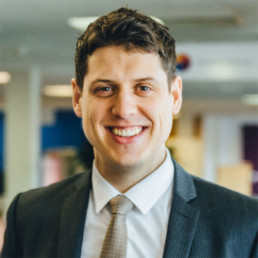
Written by Paul Holcroft
Paul Holcroft is the Managing Director at Croner.
Organisations are actively seeking out, not just multi-talented workers, but also multilingual employees to join their workforce.
Hiring workers who can fluently communicate in more than one language is seen as a huge positive business asset. Employees fluent through ‘lingua franca’ allows you to trade in wider foreign fields and on international scales.
Its significance proves business success goes far beyond just being fluent in English. And through that, more employers are seeing the benefit of recruiting multilingual and ethnically diverse workers.
Read how hiring an ethnically diverse workforce, with a penchant for languages, can prove beneficial for your brand-name and succession.
Understanding the customers’ needs on another level
Your brand-name will be publicly viewed as a workplace which understands the importance of diversity and inclusion. The benefits for this will return to you, through the growth of your clientele field. And the same will occur with your customers’ commitments.
It’s worth taking notes on the new market-realms you can effectively tap into. You’ll be able to appreciate and explore them, through better insight from your multilingual employees. Learning about local customs, rituals, and beliefs can increase customer relations and marketing services.
Stronger customer loyalty and relations
Through diverse workforces, you can bring about great benefits to your customer relations. A stronger rapport means business interaction will run more smoothly and efficiently.
Employees will share lingual mindsets and cultural backgrounds, which means they can establish queries to greater lengths and depths. And their understanding for customer satisfaction and objectives will remain completely exclusive.
Your clients will be left with confidence and appreciation for your tailored services. And with strengthened trust, you can keep confident that their loyalty will transpire into business profit and succession.
In-house translation support
You can effectively utilise employees who are bilingual, multilingual, or polyglots for any business projects that require language-centricity.
They can be used for a wide range of communicative work-tasks, like drafting legal contracts, writing dual-language materials, and international marketing campaigns. You’ll be guaranteed high quality content and easily accessible services.
Different level of talent and skill set
Employees with multilingual capabilities bring a completely different type of skill set to the table. Research by the National Institute of Health found bilingual people were able to switch tasks and process information faster than monolinguals.
It allowed employees to work efficiently within fast-moving work environments. Meaning they’ll adapt effectively to hypergrowth and business expansion; and can handle new and unfamiliar experiences easier than others.
Honing on this talent means workers will more likely remain in your employment. They’ll feel appreciated, valued, and aspire to progress further in their career with you.
Minimising the PR mistakes
Recruiting employees, fluent in the language you’re working in, allows you to expand without a fear for linguist mistakes.
Facing marketing errors and translation issues reflects badly on your business name. When venturing into new markets and cultural demographics, your projects shouldn’t manifest costly business mistakes.
If you do conduct business that extends geography, language, and culture, it’s vital to have an in-depth understanding in that field. And you should understand ways to adapt your values and intentions to succeed in the new market.
The importance of diversity and inclusion in business
Diversity and inclusion often go together – but are two completely different amenities.
You’ll benefit from utilising both strategies to strengthen equal opportunities in your workplace.
A diverse workplace will attract employees from all walks of life. Your business will be recognised as a place of equal opportunities and career progression.
It’s fair to say, not all businesses are able to hire candidates from a wide range of backgrounds and linguistics.
But through taking a proactive approach towards creating a diverse workforce, you’ll be able to attract talent and corporate reputation – all benefiting business prosperity and succession.
Conversion therapy is a safeguarding issue for educators
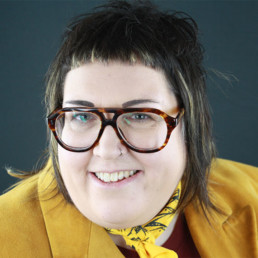
Written by EJ-Francis Caris-Hamer
Mx EJ-Francis Caris-Hamer is a PhD student at the University of Essex within the Department of Sociology. Ze has worked, as a qualified teacher, within the education sector for 20 years, working in both 11-19 sector and Higher Education.
I woke up this morning to read the news that a leaked document shows the government decided to U turn on their commitment to ban conversion therapy. In 2018 the conservative government pledged to ban the practice (Government Equalities Office, 2018) and this was confirmed in the Queen’s speech in 2021 (ITV News, 2022). My heart truly sank hearing this news because it felt as though the U turn was a decision based on political interests rather than an evidence-based health decision (Cramer et al, 2008; Independent Forensic Expert Group, 2020). Fast forward to the BBC News, 46 minutes ago, the updated stance reads that the conservative government now does plan to ban conversion therapy practices in England and Wales for sexual orientation identity, but will remain legal for transgender identities (BBC News, 2022).
What is Conversion Therapy (CT)?
Conversion Therapy (CT) is also known as ‘Cure’ therapy or ‘Reparative’ therapy. It is any “form of treatment or psychotherapy which aims to change a person’s sexual orientation or supress a person’s gender identity” (Stonewall, 2021). These therapies are both unethical and harmful to the person undergoing such treatment and have been condemned by the World Health Organisation and NHS (The Guardian, April 2021) and the United Nations in June 2020 (Stonewall Survey, 2020).
Why is CT a safeguarding issue for educators to be aware of?
The charity Galop surveyed 5000 LGBTQIA+ people in February 2022. They found that 1/3rd of those surveyed suffered abuse from a relative due to their sexual orientation and/or gender identity and for 2/3rds this started when they were under the age of 18, worryingly 30% were under the age of 11 (Galop, 2022). If you identify as trans or non-binary, you are more likely to be subjected to abuse (43%). Abuse includes verbal threats, harassment, facing threats or actual homelessness, and even physical violence. 5% reported relatives subjecting them to conversion practices and the statistic increases to 11% if the person identified as trans or non-binary. Thus, it is essential that the government should also include gender identity when considering a ban of CT.
As educators, it is essential to have an awareness of these statistics and practices, just as we perceive FGM, we should be perceiving the findings from Galop and CT practices as coercion and abuse. As Leni Morris, CEO of the charity Galop, states:
“Anti-LGBTQIA+ abuse from family members is often misinterpreted by statutory services as ‘generational differences’ or having ‘different values’ rather than seeing it for what it is really is – domestic abuse” (Brooks, 2022).
Thankfully and rightly so, today we would never accept such justifications in relation to domestic violence. We need to consider Anti-LGBTQIA+ abuse in the same sense.
What can we as educators do to support young LGBTQIA+ people?
As part of safeguarding, we need to demand from school leaders the time and space to understand the potential harm that families and CT practices can cause the students we teach. We need to recognise the signs of students who could be vulnerable. It is important to recognise that identifying as part of the LGBTQIA+ community is not a safeguarding issue per se, but Anti-LGBTQIA+ abuse including CT practices is a safeguarding concern and the harmful impact it has on students. Even more importantly, students need to be empowered to spot the signs for themselves, or their peers (in support of the ‘no bystander’ agenda). This can only be achieved through awareness.
As a PhD researcher addressing queer inclusion in education, I have heard stories of teachers explaining how students have been threatened with CT by their parents or other authority/guardian figures. As a qualified teacher myself, I also recognise the time constraints that educators have when trying to find the time to research and become increasingly aware of the issues surrounding abuse for LGBTQIA+ young people. As a result, I attach two resource documents as a starting point:
Document one – This is for all staff working in education. This document is to inform you regarding the impact of CT practices and support organisations for young people. This document can be used to inform you as an educator to discuss with students and can be converted into a CPD session under the umbrella term safeguarding.
Document two – Lesson plan which can be delivered to students as part of PSHE/RSE and Citizenship. This increases their awareness and helps them to maintain safeguarding for themselves and their peers regarding CT practices. As educators, we should be campaigning to ensure that such lessons are taught within PSHE.
Sometimes to ensure effective safeguarding practices, we have to embrace our roles as trailblazers, reaching beyond the limitations of current legislation. The right thing to do is always the right thing to do.
References:
BBC News (2022) Conversion Therapy: Ban to go ahead but not cover trans people. Available: https://www.bbc.co.uk/news/uk-60947028 Accessed: 01/04/2022.
Brooks, L. (2022) Third of British LGBTQIA+ people experience abuse by relatives. The Guardian. Available: https://www.theguardian.com/world/2022/apr/01/third-of-young-british-lgbtq-people-experience-abuse-by-relatives Accessed: 01/04/2022.
Cramer, R.J. Golom, F.D. LoPresto, C.T. Kirkley, S.M. (2008) Weighing the Evidence: Empirical Assessment and Ethical Implications of Conversion Therapy, Ethics & Behavior. 18(1), 93-114. DOI: 10.1080/10508420701713014
Galop (2022) LGBTQIA+ Experiences of Abuse from Family Members. Available: https://galop.org.uk/resource/lgbt-experiences-of-abuse-from-family-members/ Accessed: 01/04/2022.
Government Equalities Office (2018) LGBT Action Plan. Available: https://assets.publishing.service.gov.uk/government/uploads/system/uploads/attachment_da ta/file/721367/GEO-LGBT-Action-Plan.pdf Accessed: 27/09/2021.
Independent Forensic Expert Group (2020) Statement on Conversion Therapy. Journal of Forensic and Legal Medicine. 72 Available: https://reader.elsevier.com/reader/sd/pii/S1752928X20300366?token=8C9A2BA4EA68E779A55552541F25EF74A6AC11D3BD64468097DE1C0B9C2A010FAA1064483ABF807884D555610390F27B&originRegion=eu-west-1&originCreation=20220402095216 Accessed 01/11/2021.
ITV News (2022) Exclusive: Government ditches ban on conversion therapy, according to leaked document. Available: https://www.itv.com/news/2022-03-31/exclusive-government-ditches-ban-on-conversion-therapy-leaked-document-shows Accessed: 01/04/2022.
Stonewall Survey (2020) Conversion Therapy and Gender Identity Survey. Available: www.stonewall.org.uk/system/files/2020_conversion_therapy_and_gender_identity_survey.pdf Accessed: 08/09/2021.
Stonewall (2021) Conversion Therapy. Available: www.stonewall.org.uk/campaign-groups/conversion-therapy Accessed: 07/09/2021.
The Guardian (April, 2021) Why are gay conversion practices still legal in the UK? Available: www.theguardian.com/news/audio/2021apr/02/why-is-gay-conversion-therapy-still-legal-uk Accessed: 07/09/2021.
How colourful is your staffroom? Recruiting, retaining and supporting the careers of ethnically diverse teachers
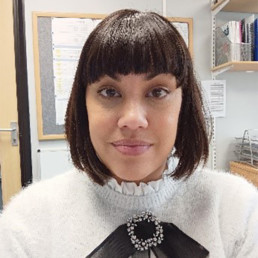
Written by Caroline Lowing
School Improvement Lead for HISP Multi-academy Trust. She was previously a Deputy Headteacher and has worked in Secondary education for 18 years. Caroline co-chairs the ASCL Ethnic Diversity Network and sits on Council for the South East of England. Caroline aims to be a Headteacher in the next 2 – 4 years.
Recently me and my colleague, Gurpall Badesha, presented to a room of school, college and trust leaders at the ASCL Conference on Recruiting and Retaining teachers of colour.
We hugely enjoyed the experience and got some great feedback but that wasn’t the best thing about it. The best thing was that most of the people in the room were white.
Since becoming co-chair of ASCL’s Ethnic Diversity Network I have really tried to carve out the time to be more informed and involved with the ED&I agenda and all of the fantastic organisations out there. I’ve attended meetings and webinars, I have had so many energising conversations and met so many inspirational people.
Even in the short time that I have been involved in this work I have noticed a big change. It is no secret that statistics around the recruitment, retention and career progression of people of colour in education are woeful. The DfE have reported that, in 2019, 85.7% of teachers were white with a staggering 92.7% of headteachers were white. Every way that you look at it, education has a big problem.
However, these statistics and what they mean for the young people that we serve can sometimes stop us in our tracks. The need to delve deeper and deeper into the implications is often overwhelming. I completely understand that we need to be heard and we need to share our own lived experiences. Goodness knows that I have told my own story many times and personal stories about, for example, being repeatedly mistaken for a teaching assistant when you are a Headteacher, are incredibly powerful.
The issue is that, often, the conversation will only go this far. The recent transformation in ED&I in education has been around what can actually do to enact change. This is why I was so pleased to see so many white school leaders in our session. These are people that want change and they want to learn how they can make that change from their position of relative privilege.
Providing solutions is hard. Coming up with ideas that work within every context is impossible. However, the magnitude of the problem coupled with the constant feeling of getting it wrong has led to a feeling of helplessness. When we shared ideas in our session, such as approaching parents from ethnically diverse backgrounds on the school gate to apply for governor roles, it was a joy to see people scribble it down to take back to base. Equally, it was wonderful to hear about schools that already have effective practices. For example, one school tracked its alumni through university and then approached students of colour to support them through joining the profession. I was frantically scribbling, then.
There is absolutely a lot to do to improve the recruitment and retention of people of colour in education but I am genuinely optimistic about the future, not least because school leaders on a mission get things done!
If you would like to know more about ASCL’s Ethnic Diversity Network then please contact Caroline at c.lowing@hispmat.org or she is on Twitter @caroline8779
A Call for Action
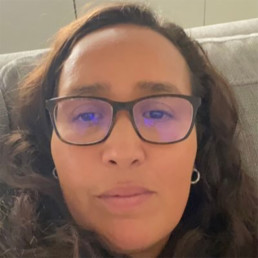
Written by Esther Mustamu-Daniels
Esther Mustamu-Daniels has 20 years of teaching experience working in London and the Middle East as a Class teacher, Education officer, Middle Leader and DEI Lead. Currently working at British School Muscat, Esther co-leads the DEI work across the whole school.
I read the most horrific story of a child being sexually assaulted by police in her school. Her teachers did nothing to protect her. Her parents were not called. She was strip searched while in the middle of an exam while on her menstrual cycle. She was not allowed to clean herself after. She was not checked upon to see if she was ok and then she was sent back to her exam to continue it. All by people who are supposed to protect and look after her. All I kept thinking about was what if this was my child? This happened two years ago and the conclusion of the investigation is that ‘racism was likely to have been an influencing factor’.
Unacceptable. The child is now in therapy traumatised by these events and now self harming.
What if this was your daughter? What would you do?
I have been thinking about the reports of Ukraine. How our children feel hearing these reports. Not only of the African students who have been denied entry on to trains and through borders but also of the reporting. How black and brown lives are deemed lesser and how this is normalised in our media. What impact is this having on our children? On all of them? How wars in certain countries are acceptable but in others ‘horrific’. How western media is more sympathetic towards a ‘type’ of refugee. What are we sharing with our children? With all of them? What are we teaching them? What kind of world are we showing them exists?
There are so many stories in the media that show our children the unjust and prejudiced way of the world; how can we counteract this? How can we show them that they are all important? That their lives matter? Put yourselves in their shoes and think about the messages that they are receiving. Think about what you can do to counter that.
If you are a teacher, what do you show your children? The stories and images you choose to share have a huge impact. The authors you share and the lessons you teach that include positive role models, narratives and histories will all have an impact. Are you considering the impact that current events are having on your children? What are you doing to support them? Are you calling out if you see racist or biased behaviour?
If you are a leader, what are you doing to counter these messages? Are you holding spaces for people to share and raise concerns with you? Are you actively trying to ensure that your establishment does not reinforce these messages? What policies do you have in place? What training do you have in place? If you are not aware or are not sure how to navigate these situations, are you seeking support and advice from those who do know?
This is a call for action to break these biases. Are you aware of what some of your children and colleagues may be facing? Are you aware of some of their experiences? Could you even be responsible for some of their experiences? Imagine it was you? Imagine it was your family? What would you do? What will you do? What action will you take? What will you do today to support our future generations and all of our children and adults who are impacted and continue to be impacted by the traumas they witness?
Take action for what is right in whichever area you occupy. We all have the power to take this action and make a difference so that the bias stops. So our children and our communities are safe; psychologically and physically. What will you do?
Making the DEI mission of your school mean more than just words.
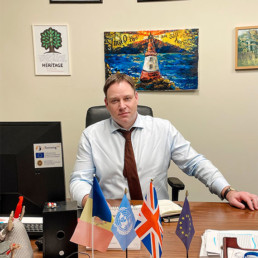
Written by Rob Ford
Rob is an educator for nearly 30 years, a history and politics teacher, a school leader in various schools in the UK and was principal of Wyedean School in the UK, before being appointed as Director of Heritage International School group.
“Our lives begin to end the day we become silent about the things that matter”. MLK
As my colleague sobbed with frustration and emotion in my room one afternoon, after a long day at school, going through what had just happened in class, I realised in that moment how powerless I felt there and then as a person but I knew how powerful my school’s culture, ethos and policies truly were in these awful moments. More than just words when put to the test to support my colleague as she asked for my help as a school leader.
My colleague, an international teacher, had been on the receiving end of a racist comment and it underlined to me just how much work we still have to do in our schools and communities to ensure such hurtful and offensive moments don’t happen especially when it comes to the words, beliefs and actions of children and young people in our care.
When we found the students responsible and put in place the necessary sanctions & follow up actions warranted, the comment from one parent said this to try and downplay the incident; “It’s like he was at the same table when the waiter was abused but all get thrown out of the restaurant”.
Illustrating perfectly with the choice of words that even the most liberal, educated, wordly wise and enlightened of school communities, especially those with many nationalities and a strong global outlook, need to continue to work together with the whole community, to challenge and change such mindsets. In contrast, the students were actually very contrite, apologised, owned their responsibility and repaired the damage done with their teacher who was prepared to move forward with them on this basis.
We cannot ever be silent on such issues as school leaders, nor should we feel powerless individually to tackle these issues successfully. We need to prioritise clear policies, culture, staff training and meaningful education in schools around issues & attitudes such as racism, nationalism, prejudice and hate that, unfortunately, have become more widespread in the 2020s around the globe. Doing nothing or hoping it won’t ever be something you will have to address is not an option either for any school leader.
Your school culture is not international because it says it in the title.
It is always quite surprising how many school leaders feel that issues around racism will never affect them because they are “an international school”. This is a very false assumption as much as stating how many different nationalities are in the school community. It doesn’t mean a school is diverse, equitable or inclusive and it’s a “lazy assumption” and derelict to avoid having a practical strategy in place because you say you are in the school’s name. Words matter here.
You need a robust Diversity, Equity and Inclusion Policy in place.
Your DEI policy should sit alongside the handful of ones, like Safeguarding, SEND, Teaching and Learning, Complaints, that you have in crumpled paper form, covered in notes and highlighter on your desk as a school leader because they are used as part and parcel of daily school life. There are some really effective, comprehensive and robust DEI policies out there to look at and adapt to your school.
Your DEI policy needs to be regularly reviewed, a governor responsible, a senior leader made responsible for it, and for it to be made publicly available, for your whole community to be aware of it with the key points clear. Get good outside experts to scrutinise it and for them to challenge you as a leader, your governors and your team on it as COBIS did to me and my school last year as part of our standards accreditation.
You need regular CPD for staff awareness and all your team believe and operate in this culture.
I couldn’t imagine annual staff training in August or regular CPD throughout the year, without time spent on our DEI, any more than I would leave safeguarding, the fire drill or Teaching and Learning out of what is central in the education and duty of care towards children. There are some incredible voices and forums out there for schools to follow and engage with and bring that outside expertise and experience to your school. Especially for schools and communities operating in homogenised and monoglot environments. Your DEI policy needs to be even more central in your strategy.
There are some incredible voices and forums out there for schools to follow and engage with and bring that outside expertise and experience to your school so tap into it; for example we have used Jon Gibson and Backdrop Education for staff training around inclusion and equity, America House in Chisinau extensively on diversity training, our governors have worked with Jackie Beard, a NLG and used the DEI programmes from NGA. COBIS have been working with Angela Browne and Hannah Wilson to deliver DEI training in schools and we are signing staff up for this outstanding & highly recommended programme for the courses this year. We also follow Hannah’s work in offering free DEI conferences and webinars to educators in the UK and around the World.
Raise student (and parental) awareness regularly, celebrating and commemorating our global, diverse communities in school daily life.
This is where you need to be prepared to be less than silent, especially in a World of labels thrown at schools such as “woke” or “cancel culture” for daring to celebrate and commemorate events in the global calendar such as Black History Month or Holocaust Remembrance. Do not shy away from what may be perceived as difficult topics or fearful of reactions.
In those school boards in the USA, where some parent groups are challenging schools for holding Black History Month events this February, because they believe it is teaching “CRT” (critical race theory), school leaders are tackling this challenge head on legally as we finally see this “false equivalence” called out and for a many, a hill definitely worth a stand on.
In Eastern Europe, the ugly racism black English footballers endured recently playing Hungary, became a very good debate topic for our IGCSE and A Level students and I was proud to see all of them call it out for the hate and ugliness it was. These are not the values these students want or their part of the world to be associated with.
We also are facing in Eastern Europe the contextual challenge of the conflict of Russia towards Ukraine, with students of both countries in our community, so we have worked with teachers on how to handle difficult questions on it and deal with issues that may arise from students in a safe arena of dialogue. This is the very reason why we educate children.
Make your community more inclusive and diverse.
This should include a recruitment policy that is more than just centred towards white Anglo-American educators and truly brings the global community to your school. I still hear the positive words of one of my students when she said coming to Heritage is like going abroad each day.
The same is about the speakers you have in school, the role models for children chosen and what you study in the curriculum. I have no issue with special days or months for events in the global curriculum calendar because it is a good excuse to highlight the work that is consciously there daily and it is not just for one day.
Schools shouldn’t worry about the odd criticism on social media because you celebrate or commemorate one day either, as long as this isn’t the only time some topics or events are looked at and studied. A “one off” is not a school culture but it is a good starting point to build on. Throughout this academic year, the UN’s #FightRacism campaign has underscored so many wider curricular events especially through whole school assemblies and cross curricular days we have aligned with as a school.
Conclusion.
We should live up to our school’s mission, culture and ethos, especially where we want future leaders to lead with the very values we claim we are about in our schools to young people including diversity, equity, justice and inclusion for a better future. Or as school leaders we will end up remaining silent on what matters most.
Ukraine, Russia, Palestine, Israel, Afghanistan, Covid-19, Climate Change…and so much more: how to get Political Impartiality right.

Written by Zahara Chowdhury
Zahara is founder and editor of the blog and podcast, School Should Be, a platform that explores a range of topics helping students, teachers and parents on how to ‘adult well’, together. She is a DEI lead across 2 secondary schools and advises schools on how to create positive and progressive cultures for staff and students. Zahara is a previous Head of English, Associate Senior Leader and Education and Wellbeing Consultant.
The last few weeks, or perhaps years, feel like a surreal blur when thinking about our global context. From the outbreak of Covid-19 to the recent war in Ukraine, it is now as if we are living through the dystopian and historical literature I once taught through fictional and non-fiction texts in the classroom. As teachers and educators there is an expectation that we not only educate students about these topics, but we must know and be aware of every article and news feed that emerges on a daily basis. In many ways, the recent Political Impartiality Guidance released by the DfE was as much to refresh our responsibilities as educators, but also to reassure teaching professionals too; unfortunately, social media coverage and wider analysis of the guidance seems to suggest the opposite. Our students and colleagues want to learn, discuss and explore current affairs, but how do we do this in light of this guidance and a school climate, where GCSEs, A Levels, limited time and limited resources dominate?
Much of the specific economic and political facts go over my head (even as a DEI Lead). Equally, my advice to teachers and schools is that you do not need to be a global, political, geographical or economic expert to address these matters. Instead, in order to get political impartiality ‘right’, whilst prioritising curriculum, teaching, learning and pastoral needs, we must remember what teachers and schools do best: we can critically navigate and evaluate the differing perspectives of world politics without being political. We can support students in how to challenge and respectfully discuss contentious topics. We can also help our students learn to be empathetic, acknowledge their emotions whilst being mindful of others too.
However, this in itself is challenging considering the ‘diversity’ within teacher training and lived experiences too. To help teachers and education professionals, below are some key learning points and explanations that can help schools get political impartiality right; if we are aware of them, we are more likely to create inclusive, safe spaces for all of our students and staff too.
Media Bias
There has been an outpouring of sympathy, global empathy, local and community charity and Influencer support for Ukrainian refugees – and rightly so. It has been heart-warming and necessary to see so many come together at a time of intense suffering to protect and support our human race. However, the media coverage and perception of refugee status has been problematic. In many ways, it seems some Western media outlets have usualised poverty, strife, pain and refugee status for particular races and regions but portray it as wrong for Western, white, ‘blue eyed’ individuals to experience the same. The question for teachers that might arise here is how do we explore such controversial media bias without making it ‘political’?
Aisha Thomas, founder of Representation Matters, asks a pivotal question: what story is your curriculum telling – a question that could not be more relevant in light of media bias, social media algorithms and being politically impartial in the classroom.
- Does your curriculum teach success stories from the East, North, South and West?
- Does it teach socio economic barriers (and opportunities) in the West, East, North and South?
- Is it gender equitable?
- Does it elevate the voices of all protected characteristics? Does every member of your class ‘see’ and ‘hear’ themselves in lessons?
- Is it intersectional?
- Is it fair?
- Is it truthful?
- Does it allow students to question, critique and evaluate the situations independently?
These are worthwhile questions to bring to the forefront of any CPD training and classroom work you do to strategically address belonging, equity, anti-bullying and teacher/student safety.
The media sources referenced above also contain bias – pretty much everything we read, see and explore does. However, it is important to explore the language and literacy of a range of media sources so students are able to have critical, mature and nuanced discussions – what every school ultimately aspires to!
Selective Empathy
Selective empathy is when we empathise with a particular group, particular causes and people for many reasons: it is dominant in the news; we relate to it, or maybe it feels close to ‘home’. Whatever ‘it’ is, it somehow resonates so much that we find ourselves becoming socially just, publicly outraged and visibly allying with a particular cause or issue. For example, you may notice that certain members of staff or students visibly ally with some causes more than others, whether that be the war in Ukraine, the Israeli-Palestinian conflict, anti-Semitism or LGBT+ rights.
Being selective in how and with whom we empathise in a globally diverse society is problematic. In many ways, it can lead to ‘whataboutisms’, alienation and further antagonism. If we are really committed to creating a diverse and inclusive world where protected characteristics need not exist and everyone feels a sense of belonging, we must approach all areas of DEI consistently – with nuance and transparent, shared values. Schools, teachers and students will need to ask themselves how they are creating safe, equitable spaces of belonging regardless of geography, economics, beliefs and values. Individuals with and without protected characteristics, individuals from marginalised and non-marginalised backgrounds need work together to create a sustainable culture for DEI. Equally, centralising ‘lived experiences’, the intersections of society and people who often fall victim to decisions and events beyond their control are who we need to ally with – they need our voice and their voices amplified. This is not political, that is just empathy and being human.
However, acknowledging our empathetic responsibilities can feel jarring; it can make some feel uncomfortable, critique ‘woke culture’ and more. Some may feel they are able to unapologetically selectively empathise – why should it matter that I empathise with one cause more than another? Why does it matter that I share my outrage for the war in Ukraine but not Syria? The answer to this question requires some introspective work:
- if we felt uncomfortable advocating for the rights and safety of Palestinian citizens in the Spring/summer of 2021, but little discomfort advocating for the safety and rights of Israeli citizens (I am using citizens and geography intentionally here as this is not a Semitic discussion), we must ask why? Does this discomfort or lack of responsibility enter your sphere of allyship with Ukrainian refugees? If not, why? If yes, why? If you feel your heart pang when you see your child or your students in a young Ukrainian child, but not in a Palestinian, Afghan or Syrian child, question why? If you are collecting charitable donations for Ukrainian refugees but this did not necessarily feel as urgent or necessary last summer again, question it. Do you find supporting and understanding the barriers faced by the LGBT+ community more accessible than anti-racism? Why?
These are difficult questions. They are challenging, jarring and some may choose to dismiss them immediately. I encourage you to work through the discomfort and potential feelings of offence. This is not a criticism, unnecessary ‘wokeism’ or misplaced social justice work; this is a call to critically address and navigate feelings of empathy. Empathy is a skill that needs to be nurtured and learned. Allyship is a set of actions that need to be consistently practiced and addressed. This is only possible if we are always sitting and working through our discomfort. It does not need to shake our core values and beliefs – instead, it reinforces that our core values and beliefs are wholly inclusive and respectful of all human life – not selective.
Intersectionality
The last 3 years isn’t a movie set in the past or a book we might be currently studying in lessons. It isn’t a case study for exam boards (yet). It is the lived experience of all of us. There are intersections to recognise, people to listen to and an opportunity to learn about globalisation, economics and geography in real life. Ask students what changes they’ve noticed: Chanel, Netflix and more no longer trading in Russia- what does this actually mean for the global economy, but also the different intersections of society? Create opportunities to learn about the intersections of economics and business and what the world will look like beyond this war. Ask students to question the impact of certain decisions and suggestions they see (and potentially support or refute) on social media. This can help overcome the fear and uncertainty associated with the current global climate – along with create opportunities for young people in a new and equitable manner.
Explore global inequality and diverse perspectives – why and how is the current world a result of a past world? There are multiple answers to explore here. This is where history, PSHE, RE, Geography, Economics, Philosophy and Politics can take precedence on the curriculum. Consider the questions and ways in which these topics are explored in their relative subject areas and how other subject areas can adopt their approaches. How can we make changes or additions to curriculum areas to explore wider perspectives?
Intersectionality is in effect, the very key to the success of every student, regardless of their background, protected characteristic, lived experience and more. An appreciation and amplification of nuance within our schools, society, student and staff body will create a culture of belonging and there is plenty of research to suggest that ‘belonging’ leads to success.
It is possible to remain politically impartial and work within a rich and valuable teaching environment. If we take a proactive, diverse and critical approach to current affairs we will be able to overcome the fear and discomfort associated with discussing ever-changing global and social climates. And, ultimately, we have the power in a classroom to create trusting and safe spaces for our students, communities and professional bodies – something that often goes amiss in the ‘politics of social media!
Cultural Intelligence
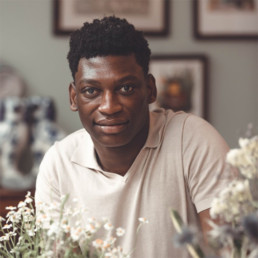
Written by Wangu Chafuwa
As a first generation immigrant, Wangu’s vantage as an insider-outsider led to a fascination in people, social relations and culture, which led to advocacy work with the British Youth Council. Wangu now uses his social consciousness and anthropological perspectives to bring human centred insights to the world of work.
Culture – and how we move through it – has also become one of the tabloids’ favourite news beats. How often do we see articles bemoaning the rise of cancel culture or so called culture wars? It’s understandable why lots of us feel nervous about approaching culture.
Even in itself culture is a difficult term to define. The Oxford English Dictionary contains 6 distinctly separate definitions of it: ranging from ‘the civilization, customs, artistic achievements, etc., of a people’; to ‘the artificial development of microscopic organisms, esp. bacteria, in specially prepared media’; to ‘the training, development, and refinement of mind, tastes, and manners’.
Culture is one of those funny little terms we all vaguely seem to understand but struggle to pin a precise meaning to. Which poses a problem as we’re routinely expected to navigate increasingly complex cultural environments.
It’s the reason why Cultural Intelligence (or CQ, like IQ) has been described as one of the essential leadership skills of the future. But how well do we understand what that really means?
There’s a phrase that’s probably misquoted to Einstein that says ‘intelligence is not the ability to store information, but to know where to find it’. Often when people hear Cultural Intelligence they think that it means having an itinerary of do’s and don’ts for cross cultural
interactions. Having this knowledge is obviously helpful, but the thing about Cultural Intelligence is that it is a practice – it has to be applied.
“But how?”, I hear you utter in anguish from beyond the screen.
In his 2011 book, “The Cultural Intelligence Difference,” Dr David Livermore highlights four capabilities to develop to effectively practise Cultural Intelligence:
CQ Knowledge relating to knowing different cultural expectations and the nuances of intersectional cultural expressions.
CQ Strategy relating to your ability to plan and prepare for multicultural interactions.
CQ Action relating to how appropriately you adapt your behaviour to accommodate different cultural contexts.
CQ Drive your interest and motivation to keep finding out more about different cultures.
Cultural Intelligence is the acknowledgement of the fact we all come from different places that hold deep meaning to us and a respect for how this shapes our individual perspectives. No one wants to be treated in aggregate. Practising Cultural Intelligence allows us to see people in their rich difference rather than one in an anonymous blob.
Our struggle to get to a singular definition of culture isn’t a failure to express, it’s a representation of the living, transforming and always shared experience that is culture.
We can see this buzzing diversity inherent in culture in the sheer number of different cultural expressions living around us. In all this contrast and colour is an infinity of possibilities. And the ever-present potential of friction.
The capabilities underpinning Cultural Intelligence may sound a bit jargony but luckily underpinning them is an innate capability to navigate our inherent differences. We are social creatures – all possessing empathy muscles that hardwire us to build bridges between us.
The Non-Linear Road To Recovery
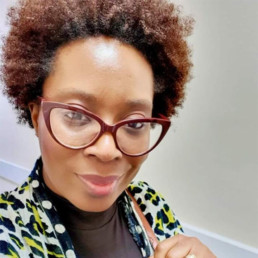
Written by Bianca Chappell
Bianca Chappell is a Mental Health Strategic Lead, Cognitive Behavioural Coach and Mental Health First Aider.
When things go awry, we like to know what to do and how to do it, so that it can be sorted out – it’s a totally natural response. With some illnesses, the treatment is simple and we are able to move on. Unfortunately, mental ill health isn’t so straightforward, and to make it even more frustrating, recovery is hardly ever linear either – we don’t experience feeling better in a nice, neat, straight line.
Life is mostly unpredictable and there’s only so much that we can control. Our mental health can take a knock-back from the things which go on internally for us, but also the things which happen externally.
We may have been going along all hunky-dory and then something happens to cause one of those sinking-stomach rough patches that we work so hard to avoid. Similarly, we might have had a long murky spell and then find that something happens to give us a lift.
Our mental health isn’t stationary, it’s transient and a counter reaction of so many individual factors. It’s difficult to always know what’s helping and what’s not, to be able to make changes to rebalance and create new habits to feel settled again.
It’s hard work and sometimes we’ll put time and effort into something that isn’t quite right for us which can be demotivating and use up energy which is in limited supply. The very nature of mental ill health is that it depletes our energy resources, so we’re always having to weigh-up where we are, with where we’d like to be, but to also be mindful that we’re not using up all of our future energy supplies. It’s a never-ending puzzle.
Life in itself is full of ups and downs. When we add mental ill health to the mix, those lows can feel extraordinarily painful and crushing. We’re working so hard to move forwards, towards good health, and those setbacks can really dent our hope and confidence. We might find ourselves in a spiral of ‘well I’ve tried so hard and things are still going backwards so everything is hopeless and I’ll never get better so there’s no point in trying any more’. It can be very easy to get into this spiral and it is very hard to get out of it again. Hitting a blip doesn’t mean that everything is hopeless and it certainly doesn’t mean that all of our hard work is for nothing. When it all feels a little much, take some time out to hunker down and up the self-care. It can feel counterintuitive but energy, hope and motivation aren’t in limitless supply, we often need to stop, to take stock and top-up.
On the face of it, it often seems as though there’s no logical reason for our mental health deteriorating. But there’s usually something, however small it might seem, which has affected how we feel.
It can take a bit of work to figure out the sorts of things that might be contributing to our mental health dipping; habits, boundaries, obstacles, lack of support, triggers etc. We might need some help with identifying what our triggers are and in learning how to handle them. One of the things which can help is to keep a mood diary – this helps us to see patterns but also gives us an in-time reflection on what was what for us at any given time.
The more knowledgeable we are about our stressors, the more equipped we are to make decisions which are right for us and our mental health.
When our mood dips again, or we use behaviours we haven’t used in a while, it’s easy to feel hopeless, useless, and frustrated. We might find that we feel like nothing has changed, as if we’ve not got anywhere, and nothing is any different from last year, or the year before that, or the year before that.
Relapsing doesn’t erase our recovery. All the things we’ve achieved – keeping our mood stable for a while, going for a period of time without using behaviours, or something else – are still achievements.
When we look back, it’s the grotty and the great that we see – but the in-between stuff is just as valuable; there’s important knowledge we’ve gained and lessons we’ve learned which help us to be more informed going forward. Every time we go through a rough patch, we can take an insight from it to aid our recovery. Even though it might not feel like it, we will be in a different place from the time(s) before. We have more experiences and more skills than we’ve had in the past. We never go right back to square one because we’re approaching each rough patch from a slightly different place.
Mental ill health isn’t something we’d choose and it’s definitely not a stick with which to beat ourselves up about. We didn’t choose to be mentally ill in the same way that we don’t choose to catch a cold. When we punish ourselves for how we feel, it makes us feel worse and plays into the hands of the illness we so want to be free from.
Not being okay can be hard to cope with, we so desperately want to be okay, but it is okay not to be okay. Nobody can be okay all of the time and recovery will always be full of ups and downs as we learn new things. It’s when we own-up to our not-okay-ness that we find ourselves in a place more accepting of help, more likely to ask for help, and more open to changes, self-care and being gentler to ourselves.

